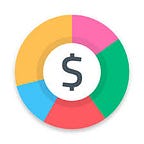Emergency Fund 101: Expect the Unexpected
Life’s full of unexpected events — some less significant, while some can turn everything you’ve worked for upside down. 🤯 Your ultimate money management goal is to spend less than you make, so you can create savings. But is that enough? Having an emergency fund lets you easily distinguish between a “can’t touch this” money (a.k.a. emergency fund) & other money ready to invest or use for short-term or long-term goals (like education, travel, retirement or accomodation).
An emergency fund is simply defined as an account where you set aside funds to be used for unexpected expenses. — Adam Hagerman 🚨
Save Money & Train Your Self Control
What’s an emergency for you? Is it a broken car you’d like to use to commute to work? Or is it a broken TV? Maybe it’s the surgery you’re due to. Or your house was flooded. Perhaps your brain screams “emergency” when seeing those summer vacations at 70% off. But is it, really? Now, as you read through this list — you’ve probably already been prioritising the money you’d use for each of the scenarios. But what should be covered by emergency funds, and what by savings?
1. Job Loss 💼
This is really stressful to experience, and it may take you some time to get back on your feet. That’s a usual situation when an emergency fund comes handy. It gives you time to make the right job decision (maybe find your dream job!) and makes sure you don’t end up in a position where you need to borrow money without giving it a proper thought.
2. Health 💊
Medical expenses are usually unpredictable, and even if you’re living a healthy lifestyle, you can find yourself in a difficult situation. Anything from medication to broken limbs, dental expenses or complicated surgeries needs to be covered. And it’s not just the health of yourself — you need to consider the health of your closest family, kids & pets as well.
3. Car 🚘
If you’re using your car daily to commute, it’s without a doubt a necessity. That doesn’t mean that you will take your emergency fund and buy a new model or use it for small maintenance, it means that you will have money in your pocket in case it breaks down on you completely.
4. Unexpected Family Matters 👫
Illness or passing away of your closest ones should be taken into consideration, especially for people who live month to month. There are various costs associated with these unfortunate events, so make sure you know how much they cost and how you can get prepared.
5. Housing 🏡
If your roof starts leaking, you go and use the money to repair it. If it’s winter time and your heating goes off, I’m sure we could classify it as an emergency. But if your TV gets out of fashion or your washing machine gets louder over time, make sure you use other savings and not your emergency fund.
You Can Sleep Tight if You Do it Right
We know that putting your money away might seem like a huge constraint holding you back from purchasing what you want at the moment, but think of it as your pile of freedom for the future. After building your emergency fund, you don’t actually have to touch it again (till the emergency comes) and you will pass the first step of the “Responsible Adulting” exam. As mentioned before, it enables you to be free… free from debt, free from borrowing money in ways you didn’t give a proper thought on. When possible, choose the harmless way and rely on your money.
How Big Should Your Emergency Fund Be
Experts recommend the size to be a minimum of 3 average monthly expenses, with the ideal being 6 average monthly expenses.
How To Build Emergency Fund Hand in Hand With Spendee
1. You need to have a clear overview of all your finances. You’ve done this step already — you’re using Spendee 👏🏼
2. Set up a budget. Don’t know where to start? That’s precisely why we prepared this article for you.
3. Calculate your average monthly expenses! Take the last three months and put the expenses together. Divide their sum by three to get your monthly average! It's very easy when using automatic categorisation, because connecting your bank enables you to see your expenses for few months back!
4. Start building your emergency fund. Start low! Set your first goal to be as high as your average expenses for one month. Keep track of your expenses regularly and watch as your savings grow every month.
